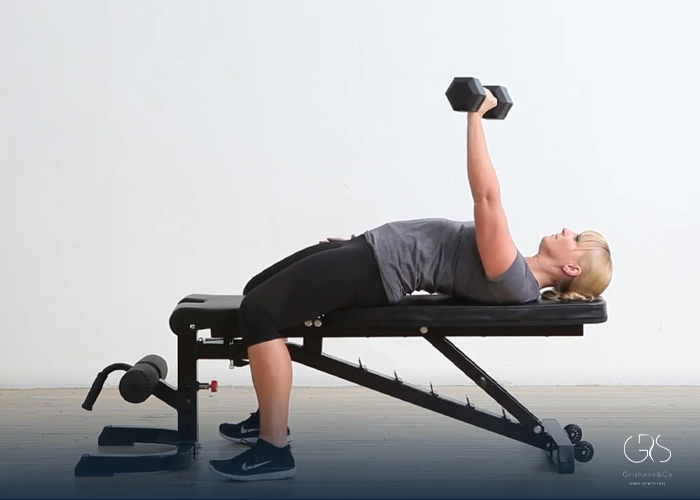Aerobic exercise, also known as cardio exercise, is a key component of a well-rounded fitness routine. It is characterized by rhythmic and repetitive movements that increase heart rate and oxygen consumption, ultimately improving cardiovascular health and overall fitness. In this article, we will explore the benefits, various types, and expert tips to help you make the most out of your aerobic exercise routine.
Benefits of Aerobic Exercise
1. Improved Cardiovascular Health
Engaging in regular aerobic exercise has been proven to reduce the risk of heart disease, stroke, and other cardiovascular conditions . It strengthens the heart muscle, improves circulation, and lowers blood pressure, resulting in better overall cardiovascular health.

2. Weight Management and Fat Loss
Aerobic exercise is an effective tool for weight management and fat loss. It helps burn calories and increases metabolism, making it an essential component of any weight loss program . Studies have shown that aerobic exercise, combined with a balanced diet, can lead to significant weight loss and maintenance of a healthy weight .
3. Enhanced Mental Well-being
Not only does aerobic exercise benefit the body, but it also has a positive impact on mental health. Regular physical activity, including aerobic exercise, has been associated with a reduction in symptoms of anxiety and depression . It stimulates the release of endorphins, often referred to as “feel-good” hormones, which can elevate mood and reduce stress.
4. Increased Energy and Stamina
Engaging in regular aerobic exercise boosts energy levels by improving the body’s ability to deliver oxygen to the muscles. As a result, individuals who incorporate aerobic exercise into their routine often experience increased stamina and endurance for daily activities.
Types of Aerobic Exercise
There are various types of aerobic exercises, allowing individuals to select activities that suit their preferences, fitness levels, and accessibility. Here are some commonly practiced forms of aerobic exercise:
1. Running and Jogging
Running and jogging are popular forms of aerobic exercise that require minimal equipment. They are effective ways to burn calories, strengthen the lower body, and improve cardiovascular fitness.

2. Cycling
Cycling, whether on a stationary bike or outdoors, is a low-impact aerobic exercise that provides an excellent cardiovascular workout. It strengthens the leg muscles and is suitable for individuals of all fitness levels.

3. Swimming
The Health Benefits of Swimming encompass a full-body workout that is gentle on the joints. This form of exercise is ideal for individuals with joint pain or injuries, as it offers resistance without placing undue stress on the joints, making it an excellent aerobic option.

4. Dance and Aerobic Classes
Dance and aerobic classes, such as Zumba, step aerobics, or cardio kickboxing, combine aerobic exercise with dance routines to make workouts fun and engaging.

Expert Tips for Success
To maximize the benefits of aerobic exercise and achieve your fitness goals, consider the following expert tips:
1.Consult a healthcare professional: If you have any underlying health conditions or concerns, it’s important to consult with a healthcare professional before starting a new exercise routine.
2.Start gradually: Begin at a comfortable intensity level and gradually increase the duration and intensity of your workouts to avoid overexertion and reduce the risk of injury.
3.Mix it up: Incorporate a variety of aerobic activities into your routine to keep it interesting and avoid plateaus. This can help prevent boredom and maintain your motivation.
4.Stay consistent: Consistency is key. Aim for at least 150 minutes of moderate-intensity aerobic exercise or 75 minutes of vigorous-intensity exercise per week, spread across several days .
5.Listen to your body: Pay attention to your body’s signals and adjust your exercise routine accordingly. If you feel pain or discomfort, take a break and seek guidance from a healthcare professional.
6.Combine with strength training: Add strength training exercises to your routine to build muscle, improve overall body composition, and enhance the benefits of aerobic exercise.
Conclusion
Aerobic exercise offers a multitude of benefits for both physical and mental well-being. From improved cardiovascular health and weight management to enhanced mood and increased energy, regular aerobic exercise is a powerful tool for overall fitness. By incorporating a variety of aerobic activities, staying consistent, and listening to your body, you can unlock the full potential of this form of exercise. So lace up your sneakers, dive in, and enjoy the many advantages that aerobic exercise has to offe
Sources
- American Heart Association, Physical Activity and Cardiovascular Health
- Mayo Clinic, Exercise for Weight Loss: Calories Burned in 60 Minutes
- National Institute of Diabetes and Digestive and Kidney Diseases, Health Risks of Being Overweight
- American Psychological Association, Exercise and Mental Health
- Harvard Medical School, Exercise is an all-natural treatment to fight depression
- Centers for Disease Control and Prevention, How much physical activity do adults need?










